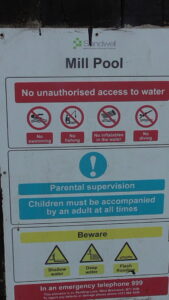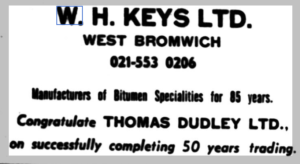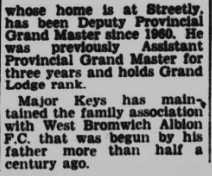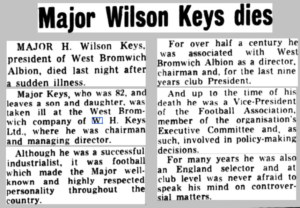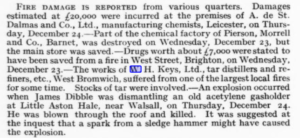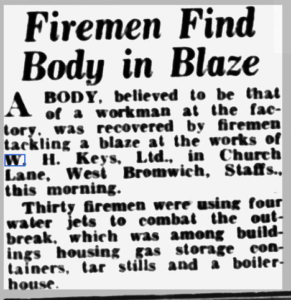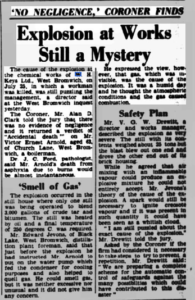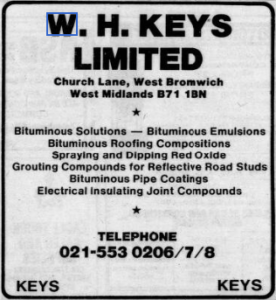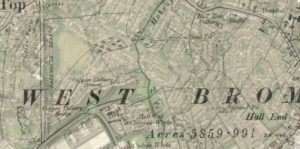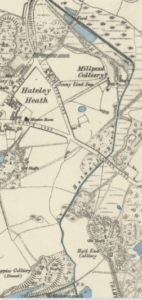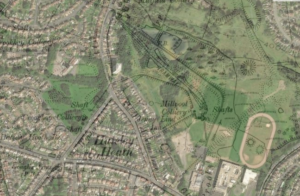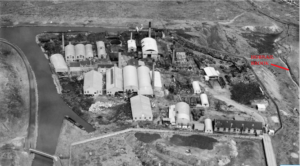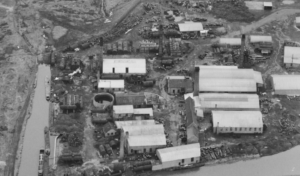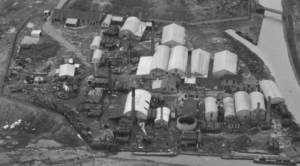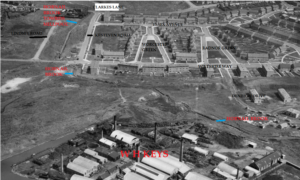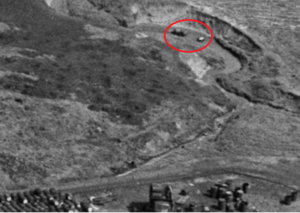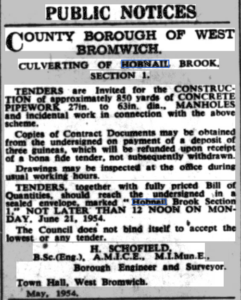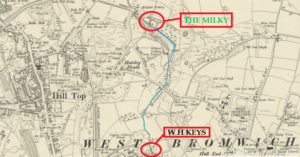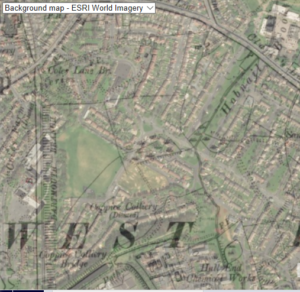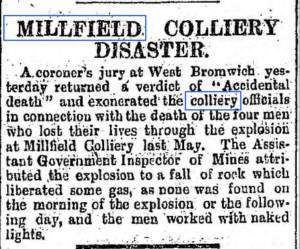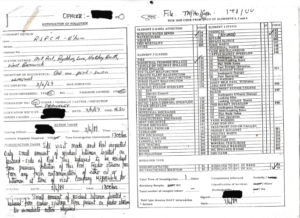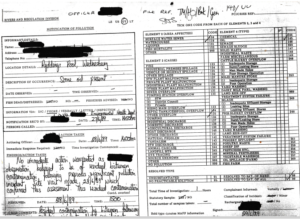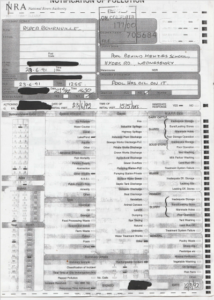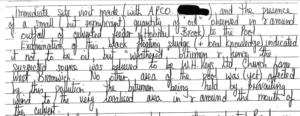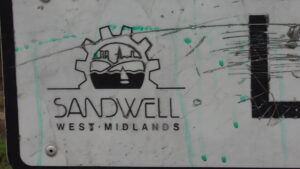The legacy of industrial waste and chemical factories being turned into housing is one which is unravelling, and I have been contacted by several people in different areas of the country with similar observations to ones that surround Rattlechain lagoon. Homes built on contaminated land that had been forgotten, and others proposed on or around totally unacceptable cankerous ground. It will of course not be the green credential liar politicians who approve these schemes that will be sick in the decades to come from the inevitable cancers and illnesses caused by building on chemical laden soils.
Rattlechain is probably the most polluted site in the UK in terms of a waterbody, but there is another in Sandwell which has been a thorn in the side of wildlife and wildfowl for many years of which I have been personally involved and getting doused in stuff that many would not go near.
This is a story I have wanted to tell for some time, and I am now just getting around to it. Once again it involves an abandoned plaything of the former mining/clay extraction industry, in turn becoming a tip and then a forgotten shit hole where pollution in turn creates victims of industrial pollution.
There is quite a bit to this story and I will tell it and my direct involvement in four parts. This first post traces the prior longstanding pollution history before I came on the scene.
THE SOURCE
It appears typical as I have found with Albright and Wilson and the other dodgy chemical firms in Oldbury that military connections, political family dynasty’s and freemasonry got you far in life in the 20th Century.
W H Keys was a disgusting local polluter specialising in Bitumen based products which made them highly flammable as well as surfactant troublesome when coming into contact with water. Their connections no doubt made many look the other way when it came to their environmental legacy, and I do wonder for how many years this continued?
The Keys family members of note were Samuel Keys, (fingers in the pie with The West Bromwich Corporation/Council) who had sons including William Hall Keys – the origin of the company, and Harry Keys. The family association with West Bromwich Albion football club offers another insidious route into the poisoning ingratiation into the area, and it could be argued that this club has always had such an effect on the town as a “firm” in itself. Why does it attract so many political followers and associates even today?
All the brothers including another Clement had positions with WBA, and the biggest player in the WH Keys firm in the 20th Century would be Henry Wilson Keys 1892-1974.
The “great war hero” baggie boy Major, (maybe not the one from Fawlty Towers) 😆 thus had a power base with which to wield his pipe and became a big player if you’ll excuse the pun in The Football Association as well as with The Hawthorns.
It also comes as no surprise that Keys were a British Military contractor in WW2, and even coincidentally were occupiers of the Portishead docks “refining bitumen” before AW took over the area.
It is perhaps ironic and maybe poetic justice that this “industrialist” was taken ill at the creosote vat central HQ at Church Lane. It is not surprising that I have traced several incidents during and after his time at the helm which show this pompous British Empire war family scum for what they really were, and once again, with the depressing familiarity of that which I have already exposed with Albright and Spillsome. Fires, deaths, spillages, pollution, but moreover cover up.
What a surprise “accidental death”- so no come back on the Major and his WBA position.
The oil storage tanks at this site would become a regular major accident hazard in the years to come, and after the factory had closed- as will be seen. The canal in question is The Ridgacre Canal and or off spurs known as The Halford’s Branch and Jesson Branch . You can imagine the pollution that would have been given off from this incident- and as I will show, the pathway which it would have gone.
Bitumen tank fires at the site- a recurring theme of pollution.
Yet again!
This repeat fire occurrence then sets the scene that would become a pollution timebomb for further afield as will be demonstrated towards the end of the 1980’s- though it should be stressed, this would have been happening for decades prior to this.
THE PATHWAY
Let’s look at the surrounding area to what was the W H Keys factory. O.S maps from the late 19th/early 20th Centuries show The Hall End works located in Hateley Heath. The Ridgacre canal is shown as well as a now infilled branch called the Halford and Jesson Branch which was off this. Most importantly, a brook known as The Hobnail brook passes East of the Keys works. The works were in an elevated position on a hill with embankments.
An overlay map with todays imagery shows how housing has swamped the area and the direction of The Hobnail Brook flow downhill.
The brook course flows through Clarkes Lane still in a downward gradient towards The Millpool Colliery.
The brook also continues towards a marshy area below the Millfield Colliery and an apparent pool, which is The Millpool.
The discoloured Millpool is visible from the overlay from today confirming the same position. The Hobnail brook flows into the Millpool via a large inlet and from there exits via an outlet towards Rydding Lane and Hydes Road where it joins the River Tame flowing towards Bescot.
From research it is apparent that this brook course was formerly largely open and not culverted as it is today.
Historic pictures from 1954 show much detail and the emerging Hateley Heath Estate being built. The brook course is entirely open and barrels from these works presumably have just rolled down the embankment.
The correct position can be identified by the distinctive spur basin and the footbridge which doesn’t appear to have changed in the 50+ years between the map and visual pictures.
Canal barges are parked outside the works which are littered with barrels and apparent little regard for environmental issues. Bitumen waste must have been everywhere on the site and mixed within the soils and the downhill gradient must have regularly affected the Hobnail Brook via groundwater pathways.
The positions of the emerging new streets are shown and how The open Hobnail Brook passed through Kesteven and Lindsey Road towards Clarkes Lane, in the shadow of the factory on the hill. The brook is of course now hidden by a pathway through the named “Kesteven green”.
After WW2, it appears that The West Bromwich Corporation and then Sandwell Council covered over and up the pollution flowing from the Hill. I have found this notice from 1954 , the same year as the pictures for example.
A further article from 1976 gives more detail. Unfortunately, it is because of fuckwit councillors that companies like WH Keys were able to hide their pollution underground. Did these fools think that more acceptable to the public, or were they so short sighted as to not realise how difficult it would be to trace back the pollution when underground? Or was it perhaps the case that they were just looking after the interests of this West Bromwich Albion connected polluter?
Clearly, this brook was the vessel with which the bitumen bastards offloaded waste. The section referred to appears to be that which leaves the Millpool and continues on to The River Tame.
THE RECEPTORS
With a direct pathway via the Hobnail Brook from the source of pollution- The WH Keys factory, The Millpool was a vessel which received the bituminous crap , and from there, the River Tame itself.
The name “Millpool” is fairly generic, and is known locally as “The Milky” because of its colour and nothing else as some have suggested- such as the preposterous “Mill Quay”. The colour has always been shite because the pollution into it has always been shite- it really is that simple.
My best guess is that the pool itself was used as a mines drainage facility between the two Collieries, The Millpool, and The Millfield. It also of course fed the River and served as a pollution carrier from further afield including that from Keys.
An overlay map with today’s imagery shows the dense urbanisation of the area and the Hobnail brook totally buried beneath concrete and hidden from view.
Collieries.
Just a little but not extensive research on these as it is not really the subject of this blogpost, except to say that I am having none of it regards these two causing pollution in the Millpool in the latter part of the 2oth Century and any attempts to muddy the waters with such crap. That of course is the type of bullshit that apologists of companies like Keys and the Albright and Wilson’s of this world always attempt to divert attention from the now, by going back further into the past.
The Millpool Colliery was owned at one point by a Thomas Millership, and as can be seen, his son Edward died here making it clear the risks that these guys took to get coal.
The same can be said for the nearby Millfield Colliery where another tragedy unfolded at the end of the Century.
As a footnote to this The two collieries were owned near to their demise by The Patent Shaft and Axletree Company– Millpool closing in 1914 and Millfields a year later. Obviously the First Great Reset otherwise known as “WW1” saw many pits and brickworks closing for good by the end of the 1910’s. This Wednesbury Company are associated perhaps not coincidentally by the Lloyd family, who had Wednesbury as their personal fiefdom as The Albright and Wilson’s ran Oldbury at the same time. Sampson Lloyd was related by marriages of his parents and brother to the Wilson family, and he was a vice chairman of this company until near his death in 1874.
There is a gap in historic records for now as to what became of the milky after the building of Menzies High school in the 1960’s and later extensions added in the 1970’s. This land at one point was in the ownership of that school, including land over the culverted Hobnail Brook which ran underneath the sports hall in Gordon Avenue. Sandwell Council however largely forgot about this site as a result of that and though window dressing coppicing work and litter picking may have taken place, the elephant in the room- the heavily industrially polluted shit hole in the middle of a housing estate alluded them.
This survey below that I have scanned was apparently undertaken by The West Midlands County Council , but the date of 1988 cannot be right as this council was abolished in 1986? This does however note the pollution within the pool, though no water or more importantly sediment sampling took place to confirm what it was.
My earliest dealings with the Milky start in the mid 1980’s, and at this time the pool was not frequently polluted every day. Swans and other wildfowl were present, as the above survey attests and the reedbed areas that had no doubt been there for decades shielded much of the grime as it could.
What is clear from historic records however that I have obtained from an FOI request to The Environment Agency is how their predecessor, The National Rivers Authority became involved in investigating pollution of this pool, via the Hobnail brook traced back to The WH Keys site.
I set these out in chronological order with discussion. N.B some of these were not very well scanned by the EA, and they have also redacted names of individuals. It is also worth pointing out that I rely on the EA to have provided all the incidents they hold and cannot confirm that these are all the records that they hold, rather the ones they provided to me. The NRA records are also records that were reported to them, and therefore only reliant on members of the public reporting events. The pollution was likely happening many times unreported given the pathway off the W H Keys site.
One issue which can be observed by this is the lack of identification of the chemicals involved or confusion, possibly because the staff are not able to test for specific chemicals but general parameters concerning oxygen levels , ph etc. Even today, the EA officers are still fucking clueless using the same crap equipment, and I note how they were unable to test for white phosphorus at Rattlechain lagoon, and set any consent limits to off site discharges FFS!
I also say I find it astounding that the officers in The National RIVERS Authority did not appear to investigate the pollution beyond the Millpool and Hobnail Brook itself, despite surely knowing that it feeds into The RIVER Tame via an outfall! If they did, then why did they not even mention this in the reports?
3/6/89
This attendance by the NRA is as we shall see a reactive one days after an incident has been reported to them- in this case by the RSPCA who have been out to rescue distressed birds- notably “a swan removed”. It is worth pointing out that their attendance may also have been days after the pollution occurred, with a member of the public only noticing something wrong by chance after the birds have been affected and become oiled. This could put the original pollution incident a week or more BEFORE the NRA even tested the pool or Hobnail Brook course. We therefore see them picking up the trail AFTER the polluter and the pollution have possibly left the scene- washing through via the outfall of the Hobnail Brook into the River Tame towards Bescot.
They claim that the Hobnail Brook “feeder stream” has no pollution present, so this confirms how it has all gone through to the millpool and beyond fairly rapidly. The “residual bitumen” and the previous spill referred to perhaps demonstrate their inability to hold this company to account.
The subsequent hand written continuation of this page was poorly scanned by the EA, but it can be seen that W H Keys, named, had accepted responsibility and had attempted to clean up the areas of the pool, and no doubt the brook course pathway that they had contaminated. I don’t see this as acceptable on the part of the NRA that they left it at this, as the so called “residual bitumen”- a harmful substance in the aquatic environment was obviously still causing issues for birds- hence the RSPCA attendance.
28/6/89
Another “residual bitumen” reference a few weeks later, showing how this chemical that should never have been there was still causing problems and how it had not been removed from the pool it was affecting.
This incident refers again to a “previous significant pollution incident” with “residual bitumen” present on the lake. It is also clear that the vegetation, reed beds on the site were holding back and trapping the bitumen, thus causing more devastation to nesting birds within these areas. The fact that it was hidden and they left this is remiss of this authority, as is the fact that Keys were not prosecuted. The NRA as do the EA have no concept of what “significant” is when affected oiled birds are present, with very limited spills causing significant issues when they preen. Birds could also have flown off contaminated to other pools and then become affected after preening and rubbing more contamination into their feather structure.
2/10/90
This incident just a year later again involved “affected swans”.
The subsequent page is more detailed than before and two different hand written reports are made which I have scanned separately for discussion.
“Lumps of tar and associated oil residues were coming out of the inlet to the pool (via the culverted Hobnail Brook).”
We therefore see a first hand account of the pathway into this pool and a description of the chemicals itself. They installed a boom at the culvert, though as has been seen already, the pollution would have now dispersed and been trapped within the reedbed areas.
I can reveal that the redacted name and organisation to be Jan Harrigan of Wychbold Swan Rescue. The RSPCA had brought in two oiled swans. It is clear that the RSPCA had not bothered to report the incident to the NRA! Pollution it is claimed was lingering on the banks of the pool- and thus could have washed back in with heavy rainfall.
Sandwell Council grassed up W H Keys as the likely source. What is concerning here is that it is claimed that no historic record of this was available, which is of course bullshit given the incident the previous year!
W H Keys were visited yet the cunt in charge did not know of a problem, but was obviously aware of the consequences of playing dumb. A manhole in Sussex Avenue, (at the bottom of the hill to the factory) revealed no visible pollution but a strong smell of tar.
The Keys idiot then claimed that they would clean up the pool, yet thought that this was another “residual incident”. What is clear to me and any other imbecile is that this was a frequent event under the incompetence of this site manager and the directors of this well connected polluter.
The subsequent visit just one day later written by someone else shows how this pollution becomes worse after rainfall, flushing more pollution out via the Hobnail Brook into the pool.
Again the company were left to clean up their mess.
A site meeting held the following week at their site reveals that someone from Sandwell Council lifted a manhole at “brook culvert immediately d/s (down stream) Key’s site. This confirmed tar/bitumen to have arisen from that site”.
We therefore confirm here the source-pathway-receptor pollutant linkage between W H Keys and the Millpool via the Hobnail Brook.
Once again the berk at Keys could not account for the company being at fault. What we get however is a cack handed attempt by Sandwell council to stop the issue, and one I believe could well have caused more serious issues years later when the fake “clean up” of this site took place.
The particular drain was “partially blocked off” only and yet again it appears that Keys were not charged with the serious damage that they had caused.
23/6/91 or 2? The writer obviously did not know what year it was.
The RSPCA had contacted the NRA again concerning pollution and affected birds at this site. Obviously the crap that had gone before and the pathetic suggestion to stop it happening again had not worked.
Once again a source from the Hobnail Brook via the culvert is known to have spewed out bituminous material into the milky. The NRA at least knew where to look this time.
“In view of the foregoing manholes on the culverted brook were lifted u/s (up stream) at Clarkes Lane and immediately d/s W H Key (sic) Ltd. Inspections at these locations indicated Keys to be the source although the amount of contamination now present was only minimal….”
Once again this refers to a previous spillage and speculates that the historic contamination of this site was to blame though the mention of a penstock valve which was not fully closed is a vital piece of information which I put on record here as to events that would unfold later. “Upon inspection it was found that this valve was slightly open thereby allowing release of accumulated groundwater/bitumen mixture. “
The rest of the report appears to confirm the RSPCA had removed wildfowl “at risk” from the contamination in the millpool. Keys were again left to allegedly clean up their mess, though obviously not the ground underneath their works and the bitumen contaminated soils.
I am aware through subsequent visits when I came upon the scene that the millpool enjoyed a respite from the Keys contamination. The penstock valve appears to have worked up to a point as in the mid to late 90’s I did not observe any issues of the type aforementioned.
The biggest issue was due to flooding of nests in the reeds due to the way in which the Hobnail brook flushes out water into the milky during heavy rainfall. This resulted in a swan nest being flooded a couple of times, though they were successful on a couple of occasions after we had installed a raft on the pool which served as a safe point away from the edges of the pool.
The scene however would not last, and greater pollution issues would again affect these birds and the millpool from the same observed source W H Keys.

